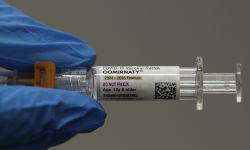Michigan coronavirus cases rise. Here’s why we are not Texas or Florida.

Oakland County Executive Dave Coulter was exasperated.
On Wednesday, he saw his county record its highest one-day coronavirus case count since May. Fitness gyms in the county have opened in defiance of state regulations. And more young people in Oakland, like those across the state, are getting infected as they fail to heed calls to remain vigilant with masks and social distancing.
- The latest: Michigan coronavirus unemployment, map, curve, updated COVID-19 news
- Dashboard: Michigan coronavirus testing numbers, trends, COVID-19 data
So he took to Facebook to implore people: Get with the program. Or else.
“I know we don't want to be burdened by this virus but we are and we have a responsibility to each other,” he said. “If we don't work together to halt this second spike we could be at risk of going backwards and not being able to send our children back to school in the fall.”
Cases are rising across much of Michigan, a direct result, experts say, of the relaxation of the lockdown, a change that allowed people to work and socialize more broadly. In the weeks since, the number of daily confirmed cases has risen and statewide COVID-19 hospitalizations have jumped by more than 100 since a low of 315 patients on July 2.
But what’s not happening, at least so far, is the explosion of cases seen across the South and West, where cases are rising at staggering levels, far beyond what Michigan experienced in March and April. They have triggered mask mandates and new restrictions on businesses and gatherings from coast to coast.
So Michigan hovers for now among a second tier of states: with elevated cases and hospitalizations, but no hair-on-fire numbers. If Michigan is akin to a moderate ski hill that requires caution, states such as Arizona, Texas and Florida are the treacherous black diamond runs.
“It’s not exponential increases” in Michigan, said Joseph Eisenberg, chair of the epidemiology department at the University of Michigan, “as we are seeing in other states.”
The White House has acknowledged the differences too: A report leaked July 14 shows Michigan is not among the 18 states in a so-called “red zone” for increasing cases (over 100 cases per 100,000 people. Over that same time, Michigan was at 35, according to the report). The White House task force for the coronavirus is recommending “red zone” states enact tougher restrictions to combat the spread.
Comparisons with other states aren’t the only metrics for judging where Michigan now stands. Sarah Lyon-Callo, director of the bureau of epidemiology and population health at the Michigan Department of Health and Human Services, said she is concerned by the uptick in cases, the location of some new cases — northern Michigan and the Upper Peninsula are seeing an increase — and a rise, albeit slight, in the percent of coronavirus tests that are coming back positive.
“We certainly keep an eye on other states’ indicators as a cautionary tale, but mostly what I'm doing is spending my time keeping my eye on Michigan trends,” Lyon-Callo said.
Here’s how Michigan differs from the hardest-hit states:
Positive test rates
One of the trends that does concern Lyon-Callo is a recent rise in positive tests. A low positivity rate, combined with higher numbers of tests, means a state is better identifying where the virus is spreading and reacting with calls to quarantine. In March and April, the positivity rate in Michigan hit 40 percent, an indication of widespread infection that prompted the initial lockdown.
The rate in Michigan had dropped dramatically, for several weeks down to just under 3 percent of tests coming back positive. That rate hit 4 percent this week and, on Tuesday, when the most tests ever done on a day were reported, 3.5 percent came back positive.
That remains well below the 5 percent level identified by experts at Johns Hopkins University as a threshold of safety — and a fraction of what is seen in states with fast-rising case loads: A quarter of Arizona tests have been positive since July 2, for instance. In Florida it’s been 19 percent and 16 percent in Texas, according to a New York Times analysis.
Increases in cases
Lyon-Callo and Eisenberg both acknowledge an increase in cases was inevitable when Gov. Gretchen Whitmer relaxed some of the stay-at-home rules that had severely limited movement in March, April and May.
The hard part, Eisenberg said, is finding that “sweet spot” of restrictions and freedom that keeps counts low enough that health-care providers can handle those who do get sick — and yet do not require more restrictive measures that could shutter the economy again.
“We know what happens when it’s business as usual,” Eisenberg said, recalling the huge spike in cases in March following a period when Michiganders moved around freely. “And we know what happens when there’s a lockdown.”
After Whitmer’s March 24 stay-at-home order, case counts rose for just over a week before steadily falling, though hospitalizations and deaths rose for a few weeks longer.
On July 1, Michigan experienced about 4 new daily cases for every 100,000 people. That rate rose to 6 per 100,000 on July 15 — but still well below the 20 cases per 100,000 the state experienced April 3.
By contrast, in Texas the rate hit 52 new daily cases per 100,000 people on Wednesday while it was at 45 in Arizona and 33 in Florida.
Hospitalizations
One of Lyon-Callo’s biggest concerns is the ability of the state’s health-care system to provide care to all COVID-19 patients when there is a surge. At the height of the pandemic in April, nearly 4,000 COVID-19 patients were lying in Michigan hospital beds at a time when the death rate also soared.
By July 1, there were just 315 beds being used for COVID-19 patients. This week that census rose to 428.
“The question that everybody has is to what extent the (spread would have to reach) before it really starts to impact the hospitals, before it starts to impact the ability of healthcare to provide care,” Lyon-Callo said.
Elsewhere, the trend has been far worse: In Texas, hospitalizations have risen from 6,900 to 10,500 over the same time frame and from 2,900 to 3,500 in Arizona.
Deaths
While cases have increased, Michigan has seen its death count plummet. Experts say that if there is a return to higher death rates, they’ll follow an increase in cases because of a lag time between infection and potentially dangerous illness.
Still, Michigan is averaging just under 10 COVID-19 deaths a day in July, down from an average of 117 daily deaths in April.
Part of the reason, in addition to fewer cases, is the demographic make-up of the infected: younger adults — those under 40 — are making up more than half of new cases, when before June they were less than a third.
Studies have shown that younger people are less likely to be hospitalized or die as a result of COVID-19 infections.
Even so, Florida, Texas and Arizona all posted their highest single days for deaths in the last week.
Gov. Whitmer and public health experts say the state is at a critical stage, pleading with residents to continue to follow basic safety measures recommended for months: wear a mask in public, wash hands and avoid crowds.
The recent rise is a reminder that COVID-19 hasn’t gone away. It’s still infecting people, Eisenberg said, it’s still sending them to the hospital and people are still dying.
“We’re still in the middle of this thing,” Eisenberg said.
See what new members are saying about why they donated to Bridge Michigan:
- “In order for this information to be accurate and unbiased it must be underwritten by its readers, not by special interests.” - Larry S.
- “Not many other media sources report on the topics Bridge does.” - Susan B.
- “Your journalism is outstanding and rare these days.” - Mark S.
If you want to ensure the future of nonpartisan, nonprofit Michigan journalism, please become a member today. You, too, will be asked why you donated and maybe we'll feature your quote next time!








